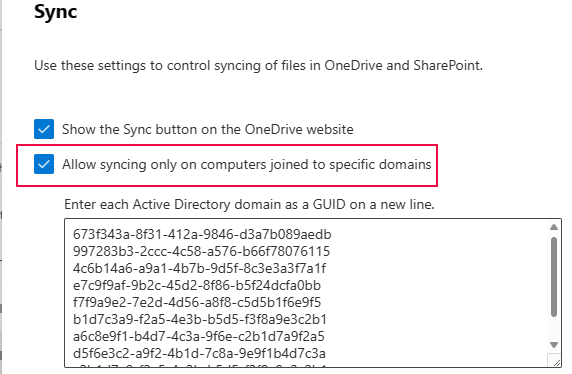Conditional Access policy for OneDrive SyncEngine instead of M365

Most organisations block OneDrive syncing to non-corporate devices via the SharePoint admin center, using a policy based on the domain GUID. That works for domain-joined PCs, but it isn’t supported on non-domain-joined (e.g., AAD-joined) corporate or workplace-joined devices. Microsoft suggests using a Conditional Access policy that targets Microsoft 365 cloud apps to block non-corporate devices, but for many environments, this current one included, that scope is too broad and the impact too high. So here’s what I did instead: I created a Conditional Access policy that targets the (hidden) OneDrive Sync Engine rather than all Microsoft 365 cloud apps. This comes much closer to the legacy option.


However, there is an easier way commented here. This includes deploying a registry key, which is easier to deploy:
HKEY_LOCAL_MACHINE\Software\Policies\Microsoft\OneDrive
Create key string:
AADJMachineDomainGuidUnhiding the OneDrive SyncEngine Client
In Enterprise Apps you usually can’t see the OneDrive Sync Engine service principal. The good news: in most Microsoft tenants you can unhide it by adding it with PowerShell. This is my go-to script I grabbed a while back:
# Requires Microsoft.Graph PowerShell
# Install-Module Microsoft.Graph -Scope CurrentUser
Connect-MgGraph -Scopes 'Application.ReadWrite.All'
$appId = 'ab9b8c07-8f02-4f72-87fa-80105867a763' # Client App ID for OneDrive Sync Engine
# Check if the service principal already exists
$sp = Get-MgServicePrincipal -Filter "appId eq '$appId'"
if (-not $sp) {
$sp = New-MgServicePrincipal -AppId $appId
Write-Host "Created enterprise app (service principal):" $sp.DisplayName $sp.Id
} else {
Write-Host "Enterprise app already exists:" $sp.DisplayName $($sp.Id)
}
Now that we’ve added it, it shows up as a target in our Conditional Access policy. The exact setup will vary by organisation:

And when a user triggers a block it starts looping and locking:





Both aren't amazing options, choose wisely. But for now, fun and games.
Proost,
